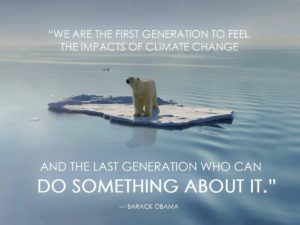Disease can be deadly, especially amongst vulnerable populations such as children and the elderly. This has become most apparent in the challenging times we currently live in, through the COVID-19 pandemic. However, there’s an illness that has long ravaged parts of the globe and posed many challenges to defeat: malaria.
Malaria is one of the world’s deadliest mosquito-borne parasitic diseases, killing approximately 1 million people every year. According to UNICEF, 1,200 children die of malaria every day. Although health agencies have tried to launch plans to help reduce the number of deaths caused by malaria and possibly eradicate it, many parts of the globe are still struggling to make this possible.
The reason for the struggle is climate change.
Climate change has been an ongoing issue for decades, and all the while many continue to cast a blind eye to its effects, it has continued to contribute to many of the visible challenges that people face all around the globe, including malaria. According to the United Nations, “climate change will increase the opportunities for malaria transmission in traditionally malarious areas, in areas the disease has been controlled, as well as in new areas which have been traditionally non-malarious. An increase in temperature, rainfall, and humidity may cause a proliferation of the malaria-carrying mosquitoes at higher altitudes, resulting in an increase in malaria transmission in areas in which it was not reported earlier.”
With climate change on the rise and its effects worsening every year, the increase in diseases like malaria have wreaked havoc in many regions around the globe. By working together to solve climate change, we’d also indirectly help resolve issues such as malaria and similar illnesses (like dengue fever, Lyme disease, etc.). By doing so, not only would we create a safer environment for people to live in, but a healthier world as well.
Sources:
“Climate Change and Malaria – A Complex Relationship.” United Nations. United Nations. Accessed July 13, 2020. https://www.un.org/en/chronicle/article/climate-change-and-malaria-complex-relationship.
“UN Health Agency Launches Action Plan as Global Malaria Cases Rise | | UN News.” United Nations. United Nations. Accessed July 11, 2020. https://news.un.org/en/story/2018/11/1026021.
“Malaria Kills 1,200 Children a Day.” UNICEF, April 23, 2015. https://www.unicef.org/media/media_81674.html.
Image Sources:
Image 1 – https://www.123rf.com/stock-photo/malaria_mosquito.html?sti=ml0jaqturs7bf5s9cg|
Image 2 – http://www.bestinfographics.co/malaria-facts-and-prevention-infographic/

